|
Displaying items by tag: selftaught
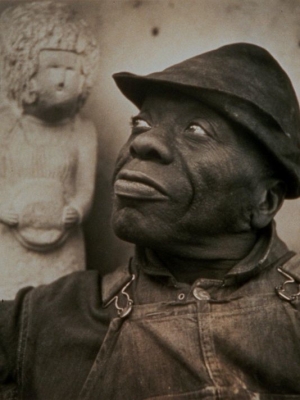
About seven years ago, an enlightened group of councilmen, business people and local supporters of the arts began efforts to transform a strip of wasteland along this city's Charlotte Avenue into a public amenity. On Aug. 20, after much community engagement, including "Design Your Neighborhood" workshops for young interns, Nashville's mayor Karl Dean dedicated the revitalized Edmondson Park. The once neglected site is now Nashville's first "art park"—a neatly fenced, tree-studded, undulating field of Bermuda grass with a walking path and a children's area, with a sophisticated "green" water-capture system, that forms a handsome backyard for a row of modest, attractive clapboard houses that bear witness to the city's ambitious urban redevelopment program. As a fitting tribute, during the 60th anniversary of the civil-rights movement, the park is named for William Edmondson (1874-1951), the city's celebrated self-taught sculptor, the son of former slaves, who lived nearby. Edmondson, who said that his carvings of figures and animals were divinely inspired, was the first African-American to have a solo show at New York's Museum of Modern Art, in 1937.
The self-taught artist Ralph Fasanella (1914-97), born in the Bronx to Italian immigrants, believed that painting could be a form of labor advocacy. He worked as an ice delivery man, a truck driver, a gas station owner and a union organizer, all the while developing his colorful and detailed scenes of working-class life (as in “Family Supper,” which shows his mother, a garment worker, taking her second shift at a crowded dinner table). He also made historical paintings, like the mid-1970s series of canvases documenting the 1912 “Bread and Roses” strike in Lawrence, Mass.
A 28 inch by 50 inch folk art rendering by the renowned self-taught artist Sam Doyle (1906-1985), titled St. Helena’s First Blak (sic) Midwife Trane (sic) By Dr. White, soared to $204,000 – a new world auction record for the artist – at Slotin Folk Art Auction’s Delta Blues to Visual Blues Auction, held April 26th and 27th at the Historic Buford Hall in Buford.
The painting, created from house paint on found roofing tin, was in excellent condition and depicted Mr. Doyle’s grandmother, a midwife, holding a newborn infant. It was the top lot of the April 26 session, dedicated to Visual Blues (folk art, typically from the Deep South). The April 27 session was themed Delta Blues and featured photographs, concert posters, records and more.
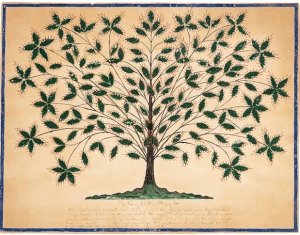
A groundbreaking exhibition originated by the American Folk Art Museum is on view from May 13 through August 17, 2014, at the Museum (2 Lincoln Square) before it embarks on a six-city US tour through early 2017. Self - Taught Genius: Treasures from the American Folk Art Museum posits an original premise that considers the changing implications of self-taught in the United States from a deeply entrenched and widespread culture of self-education in the early national period to its usage today to describe artists working outside the art historical canon and often in isolated circumstances. A fully-illustrated color catalog with essays by the curators, published by the American Folk Art Museum and Marquand Books, accompanies the exhibition. A website about the exhibition can be found at www.selftaughtgenius.org.
“This exhibition serves as a landmark,” commented Anne-Imelda Radice, Ph.D., Executive Director, “by locating the genesis of a field that has grown and become even more complex than ever before, and by clarifying its scope and substance. Self - Taught Genius: Treasures from the American Folk Art Museum provides new insight into the critical role of artists all-too-often overlooked.”
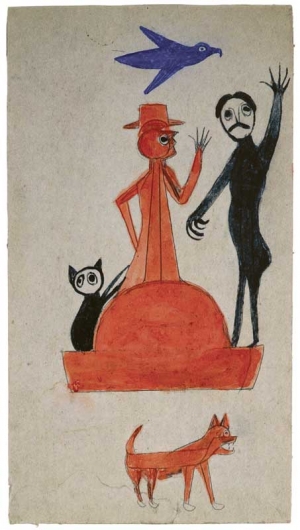
The American Folk Art Museum in New York is currently presenting the exhibition Bill Traylor: Drawings from the Collections of the High Museum of Art and the Montgomery Museum of Fine Arts. The show features over 60 drawings by the self-taught artist Bill Traylor (1854-1949), many of which have never traveled past the southeastern United States. The exhibition is complemented by Traylor in Motion: Wonders from New York Collections, which includes additional works on loan from private collections.
Traylor, one of the most significant outsider artists, was born into slavery on an Alabama plantation. Following emancipation, his family farmed on the plantation until the 1930s. In 1939, Traylor moved to Montgomery and spent much of his time drawings images of the people he saw on the street and scenes pulled from his memory illustrating his time spent on the farm. Over the course of four years, Traylor produced between 1,200 and 1,500 drawings.
While he garnered little recognition as an artist during his lifetime, Traylor began to gain notoriety during the 1970s thanks to his friend, Charles Shannon, the foremost champion his work. The R.H. Oosterom Gallery in New York mounted the first significant exhibition of Traylor’s work, which led to nearly fort solo shows and hundreds of group exhibitions. Traylor’s drawings now reside in major public collections including that of the Metropolitan Museum of Art and the Museum of Modern Art. The High Museum of Art in Atlanta and the Montgomery Museum of Art in Alabama hold the largest public collections of Traylor’s drawings.
Bill Traylor: Drawings from the Collections of the High Museum of Art and the Montgomery Museum of Fine Arts will be on view at the American Folk Art Museum through September 22, 2013.
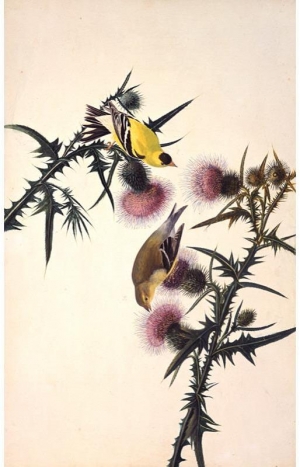
On March 8, 2013 the New-York Historical Society will launch Audubon’s Aviary: The Complete Flock (Parts I-III). The three-part exhibition, which will be on view for three years, celebrates the 150th anniversary of the Society’s purchase of John James Audubon’s (1785-1851) avian watercolors. The exhibition coincides with the release of the book Audubon Aviary: The Original Watercolors for ‘The Birds of America,’ which was published by the New-York Historical Society and Skira Rizzoli Publishing.
Audubon’s Aviary: Part I of the Complete Flock will run from March 8-May 19, 2013 and offers patrons a rare glimpse into Audubon’s earlier years. A self-taught artist, this segment of the exhibition explores how Audubon developed his unmatched style and his use of experimental media. The exhibition will include a selection of rare, early pastels on loan from the Houghton Library of Harvard University and the Muséum d’Histoire Naturelle de la Rochelle in France. Part I will also feature 220 of Audubon’s avian watercolors including the first 175 models engraved in The Birds of America.
Between the exhibition’s three parts, the Historical Society will present all 474 avian watercolors in its collection. The preparatory watercolor models for the seminal The Birds of America (1927-38) will appear alongside progressive media installations that aim to reinforce the connection between art and nature.
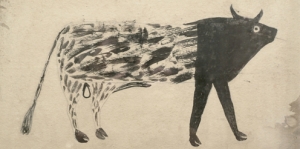
Great and Mighty Things: Outsider Art from the Jill and Sheldon Bonovitz Collection presents over 200 objects from one of the country’s most remarkable collections of works by American self-taught artists. On view at the Philadelphia Museum of Art through June 9, 2013, Great and Mighty Things includes drawings, paintings, sculptures, and other objects by 27 artists who created their oeuvres outside of the mainstream modern and contemporary art worlds.
Jill and Sheldon Bonovitz, who have spent over 30 years assembling their collection, will donate the works in the exhibition to the museum. The exhibition and gift include works by prominent outsider artists such as Martín Ramírez (1895-1963), Howard Finster (1916-2001), Purvis Young (1943-2010), and Bill Traylor (1854-1949) and spans from the 1930s to 2010. The Bonovitz’s generous donation will greatly enhance the Philadelphia Museum of Art’s collection as well as help to establish the institution as one of the primary centers for the study of American outsider art.
Outsider Art, which is known for its raw and out-of-the-ordinary beauty, has become a global phenomenon in the 20th and 21st centuries. Once considered the art of the mentally insane, Outsider Art now holds a prominent place next to modern and contemporary art while maintaining its individual identity.
|
|
|
|
|